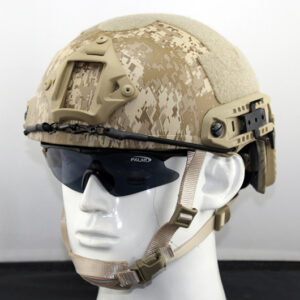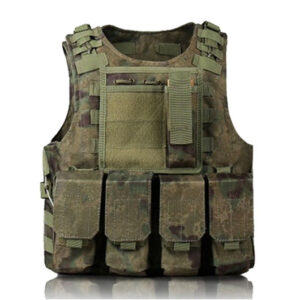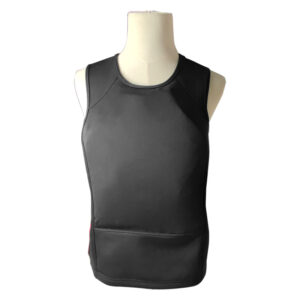Body armor comes in many different shapes and sizes, not to mention levels of protection and styles. It can be very confusing, to say the least, and difficult to find clear, concise information about the basics. knows that whether you’re looking to furnish a security force with body armor, or you’re buying your first bulletproof vest, information about the very basics of protection is always useful.
WHAT IS BODY ARMOR, AND HOW DOES IT WORK?
You may have heard the terms ‘body armor’, ‘bulletproof’, and ‘bullet-resistant vest’ all used regularly, and interchangeably. But what do these terms mean? They are all interchangeable but don’t necessarily mean the same thing. For example, ‘body armor’ can refer to any form of bulletproof vest, but may also include additional protection in the form of helmets, leg or groin protection, or even the specific plates used to provide you with protection. A bulletproof vest is fairly self-explanatory, though there are many different types as Armor’s Resources Pages explain. ‘Bullet resistant vests’ is another term for bulletproof vests that some prefer to use. This is because bulletproof vests cannot offer complete protection from a bullet- of course, a bulletproof vest will provide a great deal more protection than no vest, and body armor is responsible for saving thousands of lives.
So how does it work? Body armor usually uses either para-aramids or Ultra-High-Molecular-Weight Polyethylene (UHMWPE). Para-aramids are essentially plastics that are woven into fibers with an extremely high strength-to-weight ratio. These fibers, when used to make a material (like Kevlar), can ‘absorb’ great amounts of energy because of these strong yet flexible fibers. These materials work by dispersing the energy of a bullet across these fibers as it travels through the many layers, effectively slowing the bullet down to a complete stop, while also trapping it within these extra-strong fibers. UHMWPE works similarly, and is a gel-spun, multi-filament fiber again made from plastic, and is found in products like Dyneema. These materials are used in vests that will protect against most ammunition. However, for some, the threat is much greater, and these vests will not protect against higher caliber ammunition. In ‘hard armor’, plates of ceramic, steel, or titanium are used to protect in extreme situations, and these work in largely the same way. They are naturally much heavier and thicker of course, which is a small price to pay for extra protection.
WHICH VEST IS RIGHT FOR ME?
This is the most important question you need to ask when purchasing body armor because it can be a life-or-death decision. If the vest you are wearing does not protect you from the threats you are going to face then you will have wasted your money, and you will be putting yourself at risk. Equally, you should not choose a piece of body armor that offers unnecessary protection, as it may be heavier and more restrictive than a vest with less protection.
COVERT OR OVERT?
Body armor is produced in 2 main styles – covert and overt. Covert armor is designed to be worn under clothes. Protective vests that are designed to be worn over clothes are known as overt.
COVERT VESTS
These are normally produced in light colors. They are designed to be as thin as possible, making them unnoticeable when worn under clothing. As they are worn under clothes they will often feature moisture-wicking fabrics which will help to keep the wearer cool when worn for long periods. They are suitable for people that don’t want others to know they are wearing a piece of body armor, for example, door supervisors, undercover operatives, and close protection officers.
OVERT VESTS
These are designed to be worn over your clothes. Generally, they will be black, however, they are also produced in a variety of colors when required. For example, bulletproof vests worn by members of the media in war zones are blue, security personnel will often wear high visibility bulletproof vests, and vests worn by the military will come in camouflage designs. Overt armor is normally thicker and harder to wear than covert armor. Overt vests are worn by people such as police officers, security guards, and members of the military.
WHAT THREATS AM I LIKELY TO FACE?
When purchasing body armor you should always research the area in which you will be working, the history of attacks that have taken place there previously, etc. This will help you to decide on the type of body armor that you will need, and the level of protection you will require. Below is what we consider the main threats you would face in different circumstances, but of course, this list is not exhaustive.
POLICE AND PRISON OFFICERS
The threats you will encounter in these professions will depend massively on the area you are patrolling. An officer who works the streets of an inner-city is much more likely to face threats from an assailant with a gun than an officer in a small town would. Officers can also frequently be involved in situations with suspects where there is a threat of being attacked by a knife or needle, so they also need to be protected against those types of attacks. A multi-threat vest offering bullet, stab, and spike protection would be required to protect against the numerous threats an officer may face in day-to-day situations.
SECURITY PERSONNEL
Security personnel put themselves at risk on a nightly basis dealing with drunken, often very aggressive customers. When we consider that these same customers have easy access to bottles and glasses then the chance of being stabbed is a legitimate threat to them. Fortunately, a stabproof vest will protect against attacks from broken bottles or glasses, as well as traditional knife attacks. Again the area where they work should be considered when selecting a vest, as in some areas the use of firearms against security personnel can be high. Body armor with stab protection would be essential, and a multi-threat bullet and stabproof vest may also be required.
MILITARY PERSONNEL
In war zones, it becomes vitally important to have the highest level of bullet-based protection available. Since the threat of coming under attack by someone with a rifle is very high, the wearer must ensure that they have body armor that will protect against rifle rounds. Traditional soft body armor will not provide enough protection to stop a rifle round, so it must also be used in conjunction with hard armor plates. These plates will add weight to a vest, but will also offer the additional protection that is required. For full protection in a military zone, an NIJ Level IIIa vest will be required, used in conjunction with NIJ Level III or IV hard armor plates, as well as additional arm, neck, and groin protection.
SHIPPING CREW AND COASTGUARDS
Recent years have seen an increase in piracy at sea, which is putting the people that work in that industry at great risk. The weapons used by the pirates can range from low-level handguns to high-velocity rifles, making it difficult for companies to prepare for the threat they may face. A traditional bulletproof vest will protect from handgun rounds and is lightweight and flexible. Obviously when it is used in conjunction with hard armor plates the weight increases, and the vest becomes more restrictive. However, because of the simple fact that its workers may come under attack from pirates armed with rifles, shipping companies, and coastguards should consider high protection NIJ Level IIIa vests with NIJ Level III or IV hard armor inserts. The vests would not have to be worn on a day-to-day basis, only if the ship were to come under attack, so the additional weight of the vest should not be a problem, but if required it would provide the highest protection level possible.



